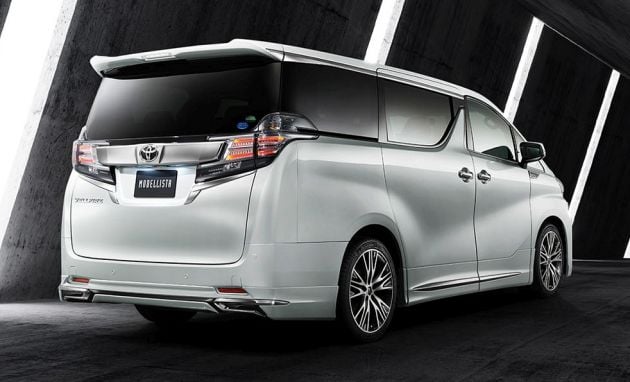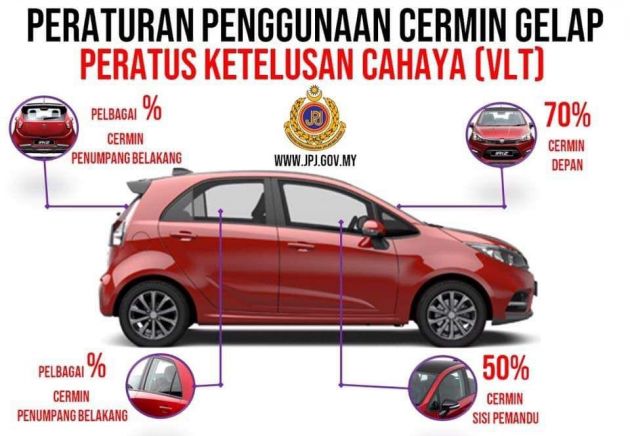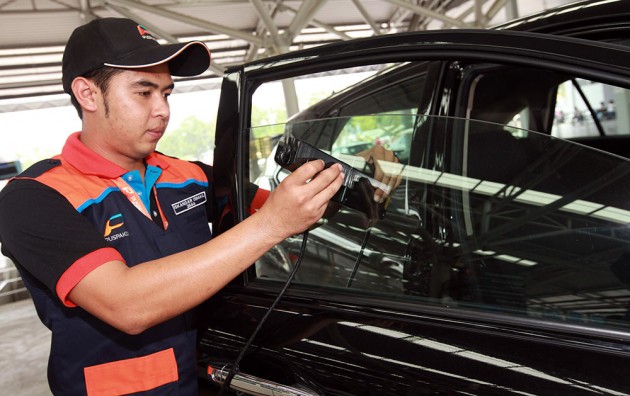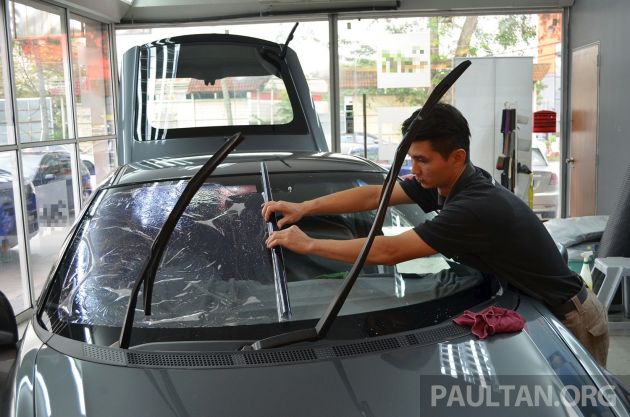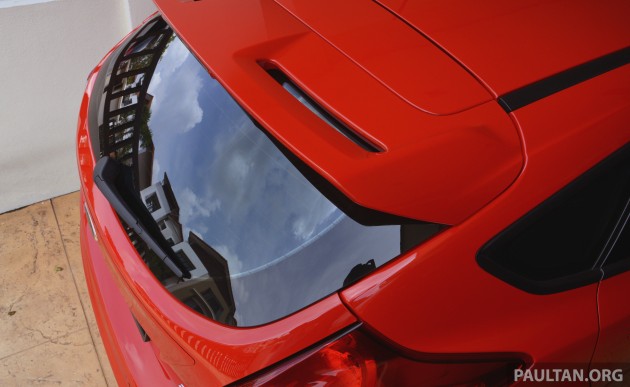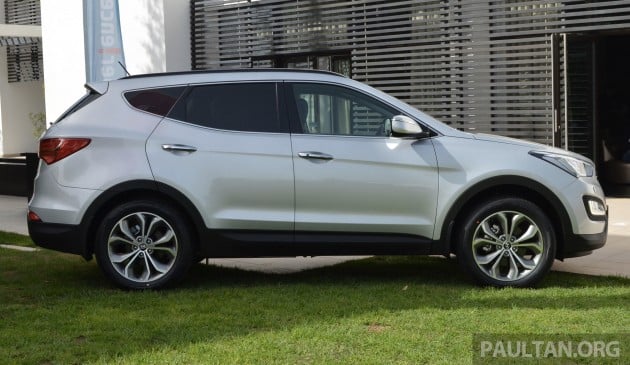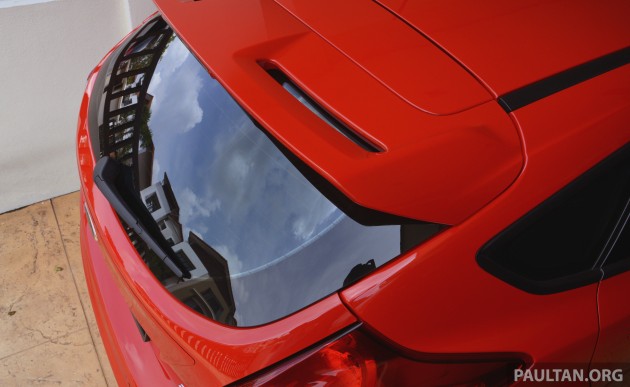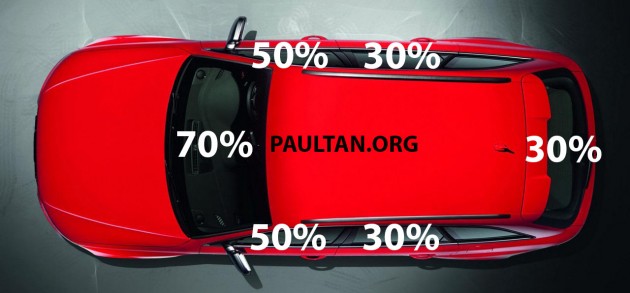It has been a week since the transport ministry announced new vehicle tinting guidelines, in which amendments were made to existing regulations filed under Motor Vehicles (Prohibition of Certain Types of Glass) (Amendment) Rules 2016.
The new ruling sees changes to the permissible minimum visible light transmission (VLT) percentage for the rear windows and rear windscreen in private vehicles. Previously, this was set at 30% VLT following the 2016 revision, but that cap has now been removed (supposedly, in line with international regulations), and with no minimum VLT percentage a motorist can theoretically go to 0% VLT and entirely blacken out (or panelise) the rear of his/her car.
With no minimum VLT percentage stipulated, it’s expected that many vehicle owners will be seeking to darken the glass on the rear half of their cars, both for improved privacy – and security – as well as a cooler mobile environment. According to news reports, there has been an unsurprising increase in automotive window film installations following changes to the ruling, with many going for darker tint films.
However, it’s worth remembering that darker doesn’t necessarily mean better, at least not in terms of performance, based on opacity. The general perception is that a darker window film will offer better protection from the harsh effects of sunlight and offer lower temperatures inside a car’s cabin, but this doesn’t always hold true.
Let there be light
Much depends on the quality of the window film, and just basing it on getting the darkest film possible might only lead to issues of visibility without any worthwhile heat rejection performance worth speaking of.
By nature, the glass surfaces – or glazing material – on a modern motor vehicle consists of laminated glass for the front and rear windscreens and tempered glass for the side windows. Here, the VLT level is the amount of light in the visible portion of the spectrum that can pass through the glazing material – the higher the VLT figure, the more light that gets through. That unfortunately also introduces solar heat.
Modern automotive glazing materials – primarily laminated windscreens – usually have some level of coating or tint to reduce the effects of solar heat, and this brings down the VLT level of that particular surface. Depending on automaker, this could be marginal or noticeable.
Of course, this isn’t enough in a harsh climate like ours, and so that’s where window films come in (because there’s also tempered glass on the sides, which usually doesn’t have any real solar gain control performance to speak of). A good window film doesn’t just reduce the amount of light transmitted into the cabin, it also reduces the harmful effects of solar energy.
Not just a simple, dyed plastic film
A high performance film will reduce the percentage of these effects, and include the ability to offer a high degree of the following:
Ultraviolet (UV) light rejection: UV radiation is present in UVA and UVB forms, the more prominent longer-wave UVA being responsible for the fading and deterioration of exterior paint and materials such as fabrics and leather inside a cabin, while the latter contributes to sunburn and other harmful skin conditions. The higher the percentage of a film’s UV rejection, the better, and most high-performance films accomplish a 99% UV rejection rate.
Infra-red rejection (IRR): Infrared light is primarily responsible for the heat you feel when inside a car, so the higher the percentage of rejection, the higher the level of infrared rays rejected. Nonetheless, a high infrared rejection rate isn’t the only thing to look at – the IR wavelength spectrum is wide, but most window film specifications only table a segment of the overall envelope and yet list a 99% IR rejection.
Total solar energy rejected (TSER): Representing the percentage of total solar energy rejected by the filmed glass, this is a more accurate – but by no means an absolute – measure of a film’s performance. The higher the percentage value, the less solar heat is transmitted into the cabin.
While the measured percentages of many high-performance films show higher TSER in darker variants of a particular range, lending credence to the belief that a darker tint is cooler, it is usually limited to a like-for-like comparison and is range specific.
What this means is that if you take different range window films from the same manufacturer, you’ll find that the TSER (and IRR as well) of a range-topping 60% VLT film is far better than 40% VLT mid and entry-level series offerings, despite the latter having darker properties.
Glare reduction: Although it is not a prerequisite measure, some companies list this aspect, which is tied in to opacity. The only noticeable area in which a darker film offers better performance than a lighter one is in glare reduction aspects, simply because more light is filtered from entering the cabin, much like how sunglasses reduce the glare for a user wearing them.
Still, opacity isn’t a parameter to measure the efficiency of solar gain control, because it again boils down to how good a film is. A low quality dyed film with poor or nonexistent UV and IRR rejection may keep light transmittance low but won’t keep the heat out, and the adage of you get what you pay for holds true – cheap films don’t last (fading, bubbling, waviness), and visibility through them isn’t going to be great, more so as they age.
Darker windows = better safety?
At this juncture, the fallacy of darker tints being safer also needs to be debunked. Aside from keeping away prying eyes, a dark tint isn’t “safer” or more robust. A darker window film by itself won’t make access into a vehicle more difficult for rescue services personnel in an emergency, despite that suggested by a recent news report.
The tensile strength of a window film is down to its construction properties, and security films of course exhibit stronger impact resistance. Opacity alone doesn’t determine how strong a film is, because security films can be colourless.
How dark is dark enough?
Going super dark might make your car look cool, but consider the issue of road safety, where visibility is paramount. In a recent news report, Malaysian Automotive Accessories Traders’ Association president Lim Bee Choo voiced the association’s concern about road safety if the rear windscreen was blackened out, and while there is little issue of visibility during the day, the same cannot be said at night.
She added that many users regretted installing overly dark tint film on their rear windscreens, because it made it difficult to see the road clearly especially when driving at night or in the rain. Lim also said that a darker tint film did not mean greater heat-reflecting capability.
A couple of window film installers we spoke to said they would not recommend totally blackening-out the rear windows and windscreen, citing the same difficulties of reduced visibility. They said that while a VLT level of around 10% for the rear side windows is still acceptable with regards to driving safety, reduced visibility when moving out of side parking should be taken into consideration when making a decision.
As for the rear windscreen, that should have a workable level of clarity, with a reduction to 15-20% VLT being the suggested minimum for customers wanting to darken the rear. At this level, a rear-view camera should firmly be part of the equation.
Darker isn’t always better
They added that a high quality window film provides enough solar gain control performance without the need to blacken-out windows, and there was very little beyond the reduction in rear cabin glare, increased privacy aspects and cosmetic appeal in going the particular route.
They stressed that customers should look at the quality and performance of the window film and not use mere opacity as the defining parameter to measure performance, and added that consumers should go for the best film possible within their budget and not opt for something from a lower, less performing range just because it has a version with a higher opacity.
So, consumers need to ditch the perception that darker shades of window films provide better heat rejection and safety, because that really isn’t a measure of how it works – a cheap, heavily dyed film won’t keep the cabin cooler than a high quality film with strong TSER aspects.
The professionals’ advice? Go with established brands and the best possible film you can afford, even if it’s not the darkest one you can get your hands on. If a company has an infra-red heat-emitter to do a side-by-side comparison of their window film, make sure you try that out to understand things better.
There’s also the option of removable window screens, which provide an additional measure of VLT reduction without the hassle of a fixed installation. It’s a route worth exploring for those with existing window film that is relatively dark, for example that which is already within the previously established 30% VLT level for the rear.

